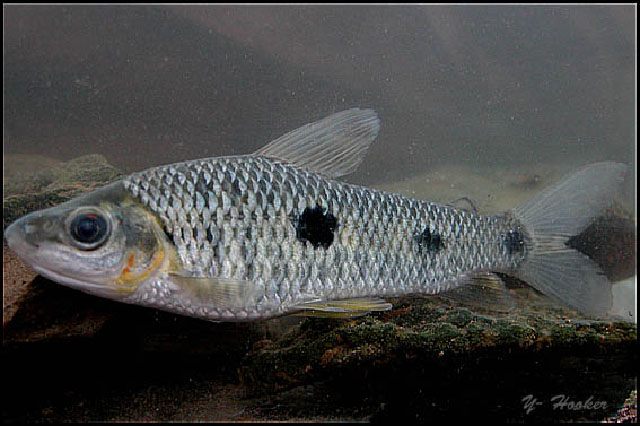| Anostomidae (Headstanders) |
| 40 cm SL (male/unsexed); max.weight: 1,500.0 g; max.weight: 2,000.0 g |
|
benthopelagic; freshwater, potamodromous |
| South America: Suriname and Amazon River basin (Ref. 36801). Reported from Argentina (Ref. 9086). |
|
Dorsal soft rays (total): 12-12; Anal soft rays: 11-11. Scales in lateral line 35 + circumpeduncular 16; profile over orbits flat; teeth in the upper jaw 4 + 4, the cutting edges about transverse to axis of fish; three lateral spots or blotches still distinct: the first and largest below rayed dorsal fin, the small second spot less distinct and found above anterior base of anal fin, the third at caudal base. |
| Adults occur in ponds (Ref. 11229). Very active during the rainy season, they gain the flooded zones where they are captured with nets. In dry season, they are confined to the deepest parts of the river where they are captured with fishing rods. Feed primarily on fruits, seeds and termites. The food is crushed by four strong teeth on each half-jaw. (Ref. 27188). Males are sexually mature at 1 yr, while females are mature at 2 years. Distinct pairs breed on densely grown weedy places (Ref. 205). Reproduction takes place from November to June, with a peak from December to March but mature individuals can be found year round. Females spawn around 100,000 to 200,000 eggs (Ref. 12225). The females grow slightly faster than the males; however this difference is clearly perceptible only after 4 years of age. Its excellent flesh makes it ideal for consumption in spite of its numerous bones (Ref. 27188). |
|
Least Concern (LC); Date assessed: 19 June 2020 Ref. (130435)
|
| harmless |
Source and more info: www.fishbase.org. For personal, classroom, and other internal use only. Not for publication.

